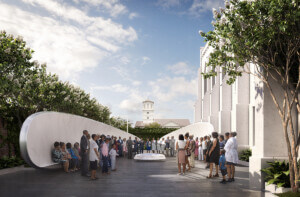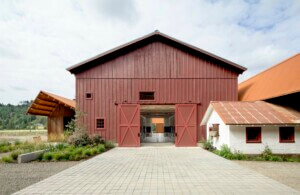Nearly a full decade after it was first established in downtown Detroit, contemporary art gallery the Library Street Collective is gaining a larger, community-entrenched younger sibling in the form of a 2.5-acre public arts campus in the city’s East Village neighborhood. Anchored by The Shepherd, a 110-year-old Romanesque-style Catholic church that will be transformed from a house of worship into a multifaceted cultural hub and community space by Brooklyn-based interdisciplinary design studio Peterson Rich Office (PRO), the ambitious (and action-packed) campus comes as part of a long-time effort by Library Street Collective co-founders Anthony and JJ Curis to become “more deeply rooted in the neighborhoods,” as Anthony Curis told AN.
While Library Street Collective, which relocated into a new Snarkitecture-designed gallery space directly adjacent its old space last year, has frequently widened its scope outside of the confines of downtown Detroit and into the larger community through various public programs and beautification/ public art initiatives since its founding in 2012, one crucial element has been absent: A permanent space to accommodate the “multifaceted programming we’re so interested in,” Curis explained. “Over the years, we’ve kind of had to beg, borrow, and steal to get access to buildings for different projects or public space in general. And it got to a point where we sought to have a space that creates a foundation for what we are focused on—a space that could positively impact a neighborhood.”
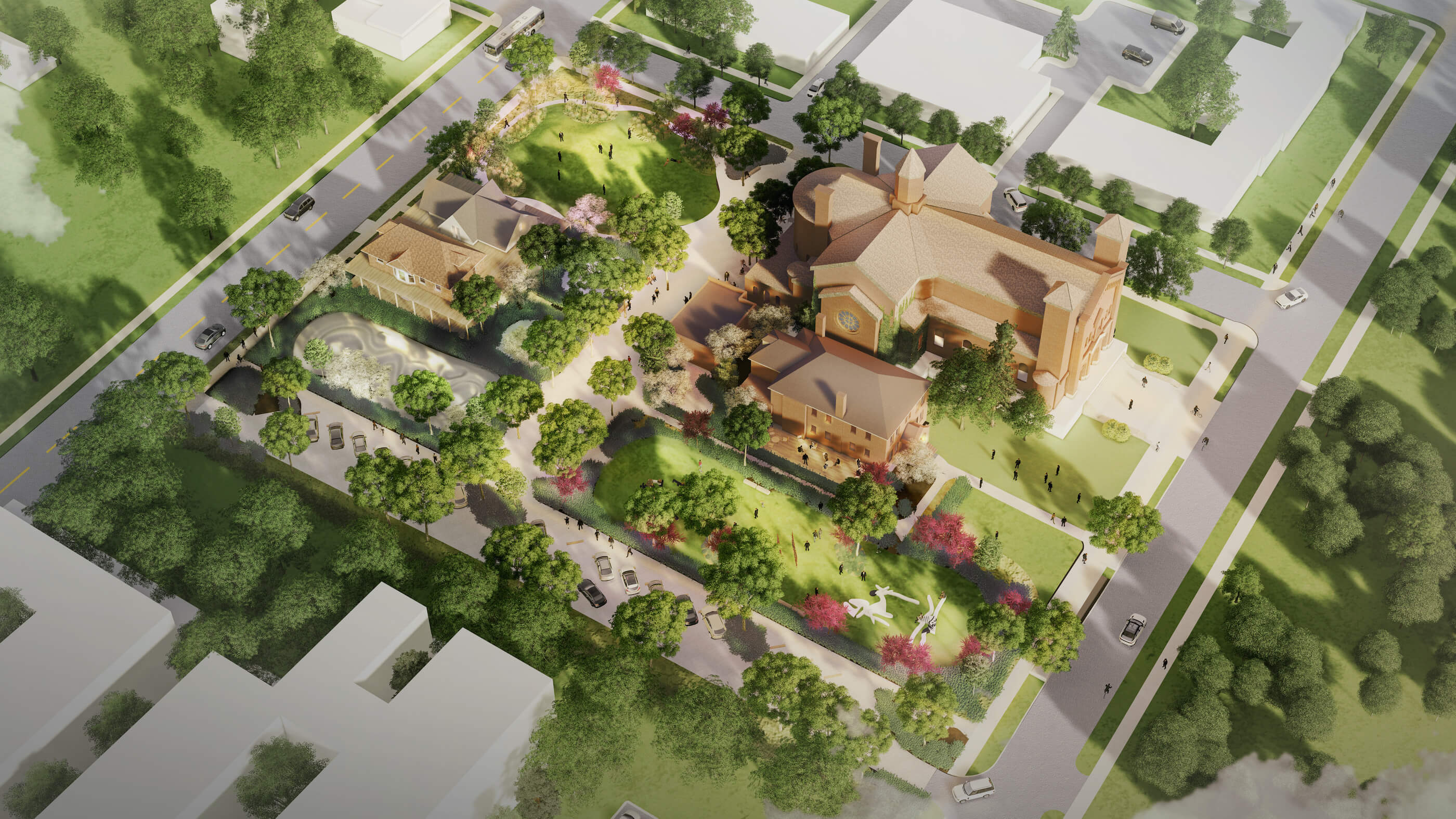
That said, Library Street Collective’s downtown gallery isn’t going anywhere. It will continue to maintain an emphasis on exhibitions while the future East Village cultural campus, functioning less as a satellite location and more of a separate but wholly complementary entity, will “blur the lines between commercial gallery, institution, and cultural center that really focuses on collaboration,” explained Curis. “There will be some crossover between the two, but the East Village campus is a dedicated place where we can really focus on larger community initiatives.”
That spirit of collaboration is palpable even before construction work on the planned campus has formally kicked off. As detailed in the official announcement of the project, the Curises are working alongside the City of Detroit, community groups, and neighboring arts organizations to eventually designate the area around The Shepherd as a new cultural district for the city. (Located just blocks from the Detroit River, the city’s East Side has been associated with the fine arts since the early 20th century when fabled ceramic studio Pewabic Pottery built its landmark Tudor-style home on East Franklin Avenue in 1907.)
Within The Shepherd proper, which has been empty since 2016 when the Good Shepherd congregation closed its doors and vacated the Parkview Street property, a core collaborator will be Asmaa Walton, an independent curator and founder of Detroit’s Black Art Library. She will serve as curator of the newly established East Village Arts Library collection, which will be housed within one of the church’s transepts and contain a public archive focused on artists of color who have had a significant impact on the arts not just in Detroit but throughout all of Michigan.
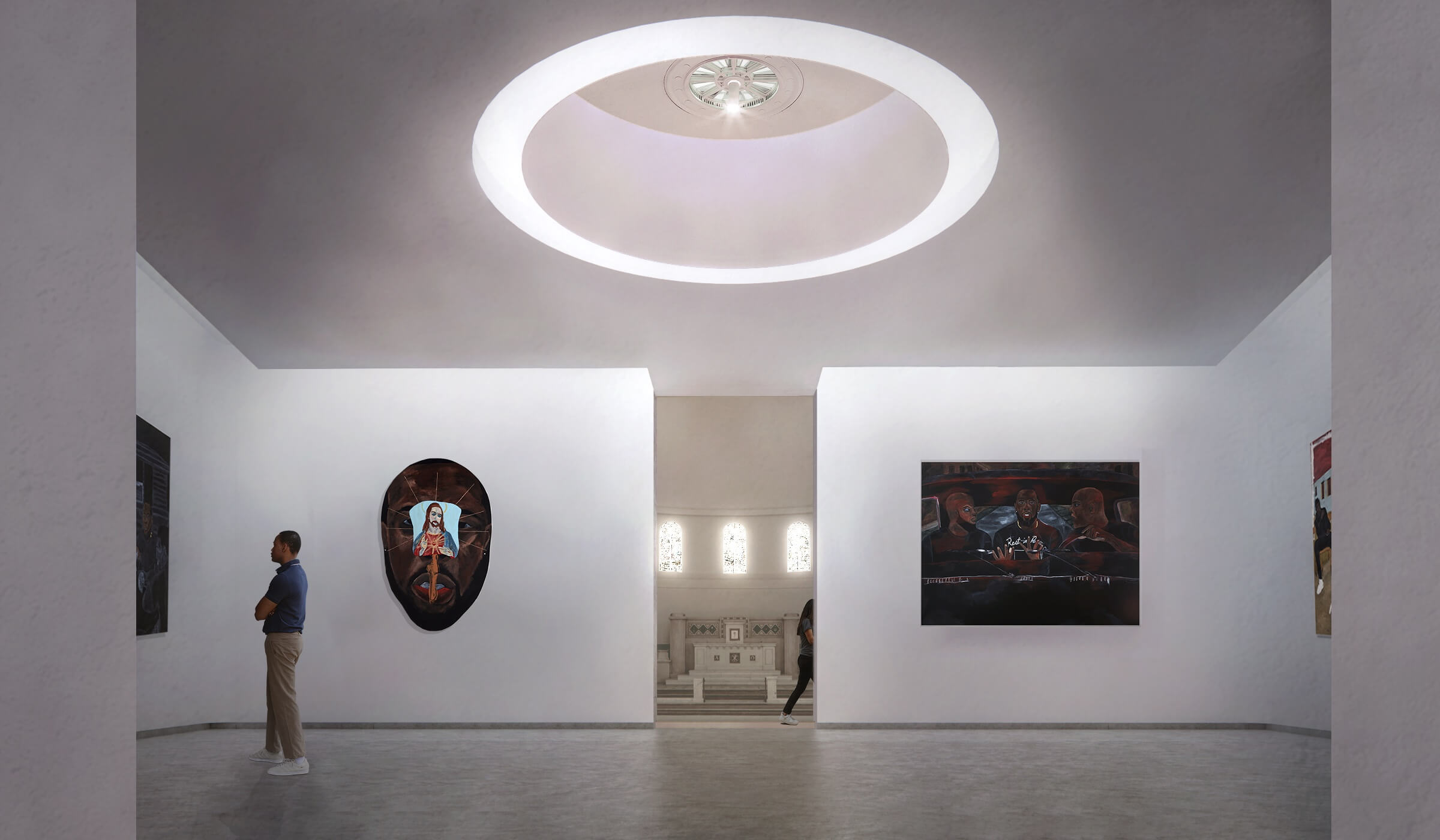
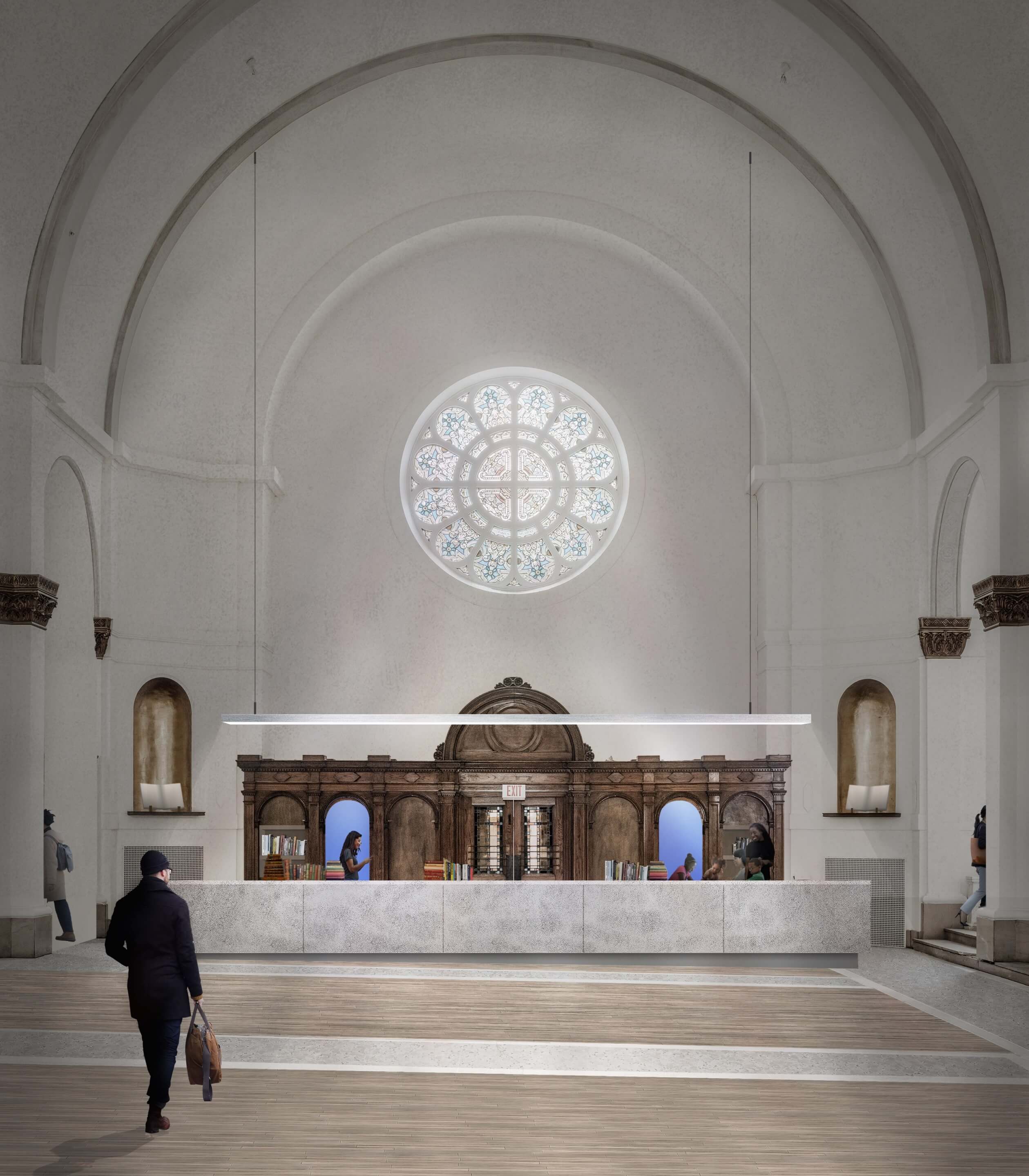
Meanwhile, the old confessionals will be repurposed into multimedia listening booths where visitors can experience audio and video materials related to the archive. The first permanent iteration of the Black Art Library will also be realized in the transformed space and “offer artist monographs, exhibition catalogues, children’s books, and rare research materials centered around Black artists and movements” per the announcement.
In addition to the Walton-curated library space, The Shepherd will also contain two core exhibition galleries, one carved out of the mezzanine level and accessible via a new ADA elevator lift, along with workshop and classroom spaces for community use. The altar will also be converted by PRO into a performance space for musical programming and related activities.
A merging of tracks
As noted by Nathan Rich, co-founder of PRO alongside Miriam Petersen, the firm’s adaptive reuse of the Good Shepherd Church into a community-focused arts space is the first full meeting of two “parallel tracks” that have been present at the young office since its inception in 2012: a cultural track that includes gallery work and small museum projects (the downtown Manhattan outpost of Galerie Perrotin, the Mandala Lab at the Rubin Museum of Art, and on) and mission-driven social work, namely for the New York City Housing Authority.
“This project in particular addresses issues of economic development, urban change, and social and political issues through the ‘tool’ of an arts organization,” said Rich. “And it really weaves the office’s two different tracks together in a way that allows us to take things we’ve learned from both to make a stronger project in Detroit.”
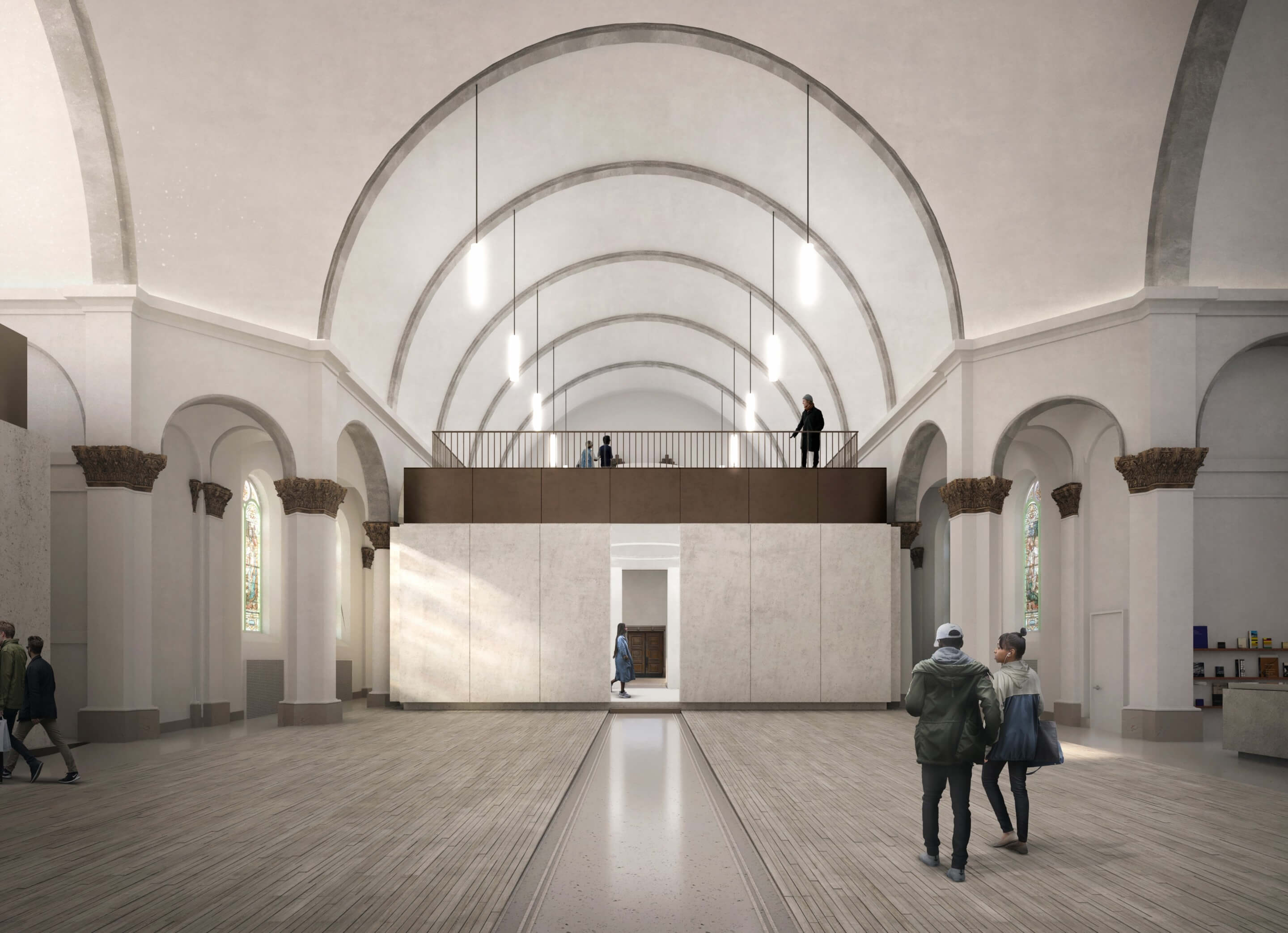
“I think what drew us to each other in the beginning is that they [Anthony and JJ Curis] trusted in seeing Galerie Perrotin that we could make a beautiful and technically functional gallery space, and that they also really appreciated where we were coming from in our mission-driven work,” added Peterson.
As for the project at hand on the burgeoning cultural campus in Detroit’s East Village, Rich described the over-a-century-old Good Shepherd Church as being in “generally great shape” despite being left unused for several years, and that the planned architectural interventions described above will be carried out with a “light-touch approach.” The exterior of the structure, meanwhile, will remain largely untouched.
“We’re basically re-proportioning the space so that the better serves the program,” Rich added. “And then we can control lighting conditions in the environment for certain types of contemporary art.”
A lively cultural landscape
While The Shepherd and its exhibition and community spaces will serve as the heart of the new East Village cultural campus, the largely underutilized church grounds and adjacent vacant lots on the block will also be transformed into a lushly planted swath of public green space designed by OSD, a New York-based landscape architecture and urban design studio focused on “building resilient and equitable communities.” Per Curis, roughly 65 to 70 percent of the campus’s total footprint will be dedicated to open urban green space.
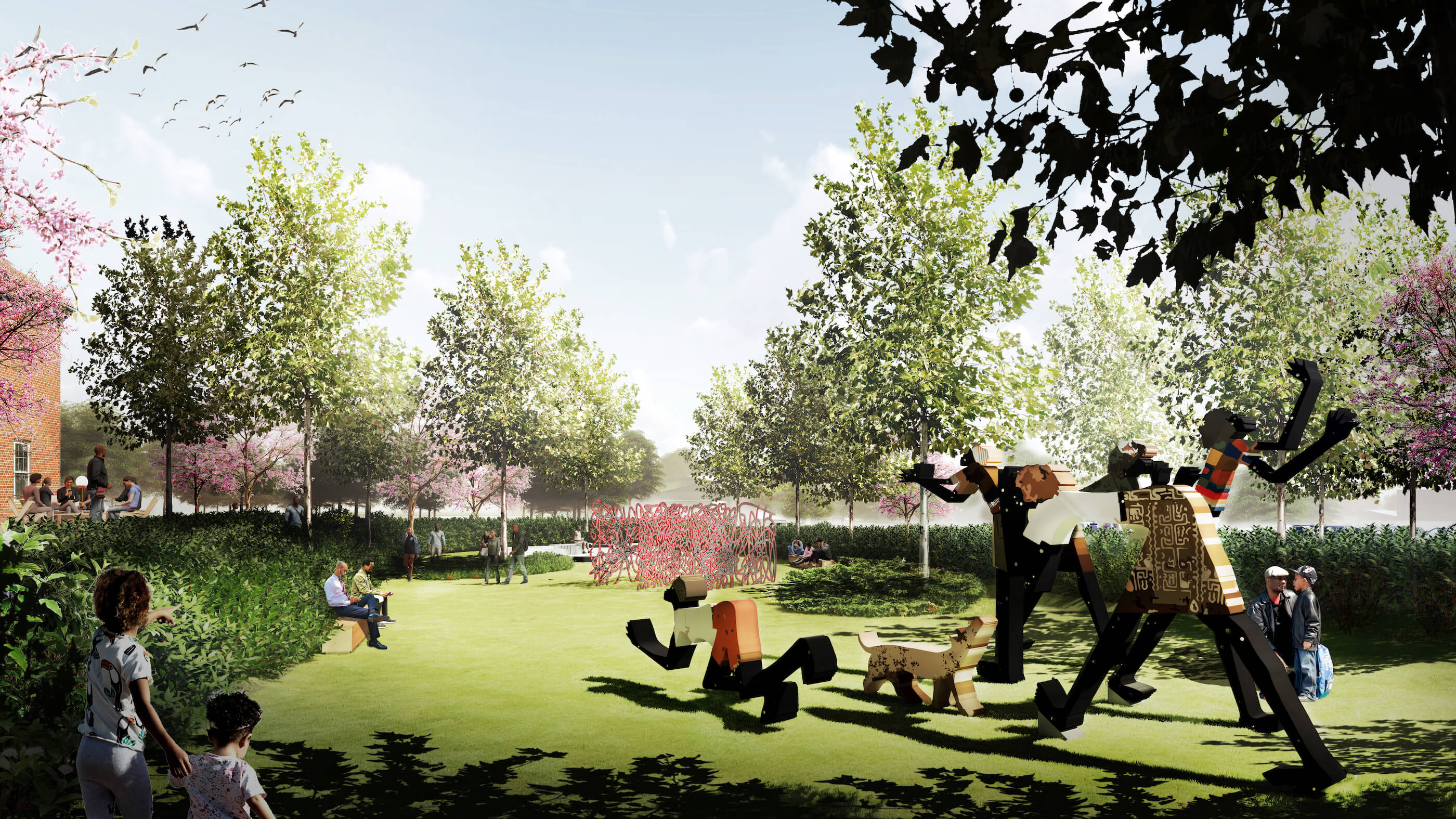
A key feature of the reactivated grounds will be a sculpture garden dubbed the Charles McGee Legacy Park in honor of the late Detroit artist and educator. A towering and much-beloved figure of the Detroit art world whose career spanned more than seven decades, McGee, who passed away in February at the age of 96, will also be the subject of a posthumous retrospective at The Shepherd when it opens to the public. Developed in partnership with the Museum of Contemporary Art Detroit, that show has been secured as the inaugural exhibition for the new space., Separate from that exhibition within Legacy Park, three large-scale interactive sculptures conceived by McGee for the campus shortly before his passing will be on permanent display.
“The concept of the park started as more of a children’s playscape,” explained Curis. “Charles was really interested in this idea of finding a way where his work could communicate with a younger audience.” While the Legacy Park concept has since evolved have more of a multigenerational appeal, the original spirit of “play and creative discovery” will still be present within the garden.
The Legacy Park project is financially supported by the Curises and Dan and Jennifer Gilbert through a partnership with multi-service neighborhood nonprofit Jefferson East, Inc.
Also joining Legacy Park as a major open-air destination on the southwestern edge of the The Shepherd campus will be a permanent public skate park-slash-community gathering space designed by none other than Tony Hawk and his team in partnership with Detroit artist McArthur Binion, who has been tapped to oversee the artistic design. (The Curises and Hawk previously collaborated on a temporary public skate park project in 2017.)
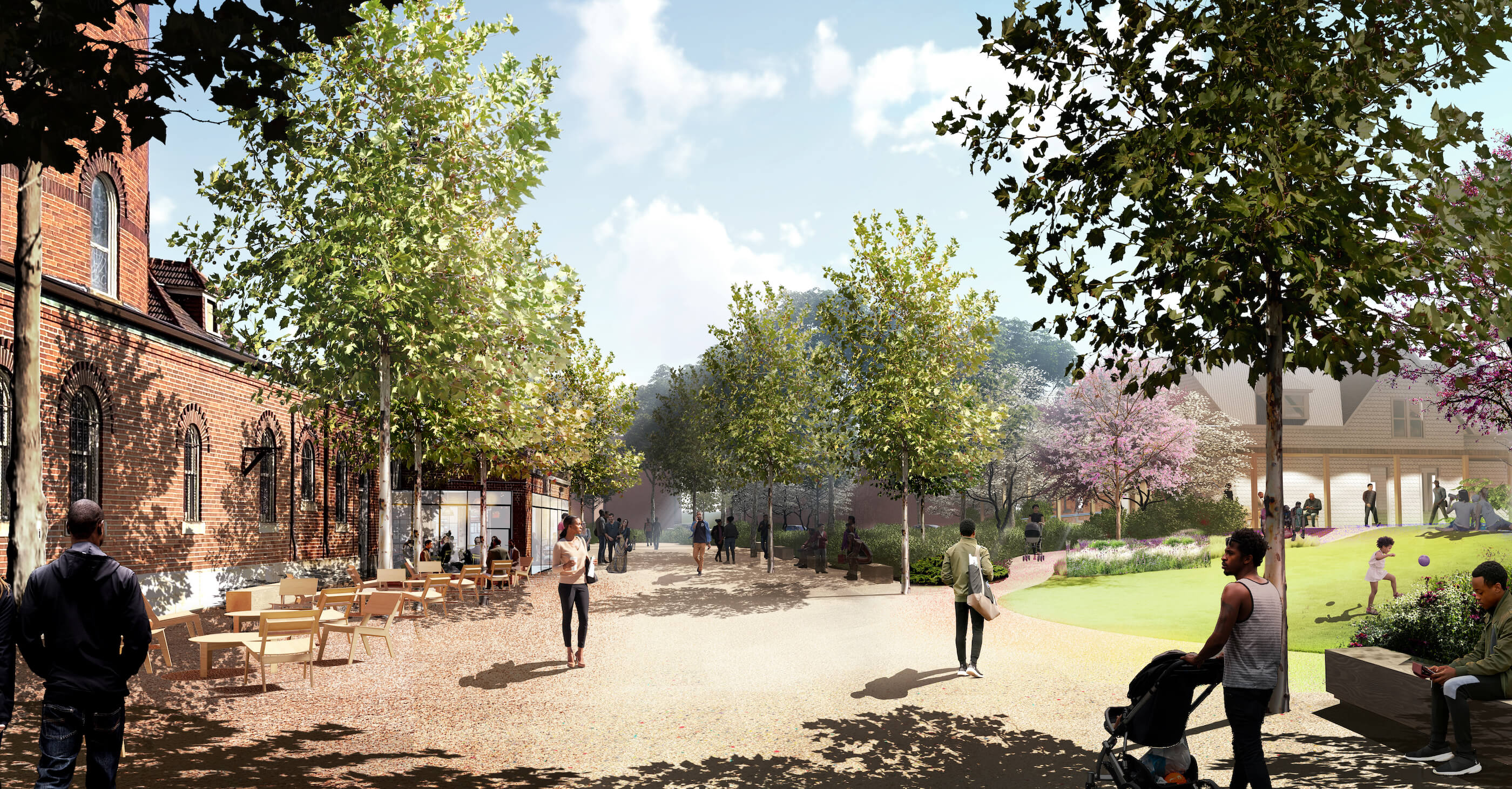
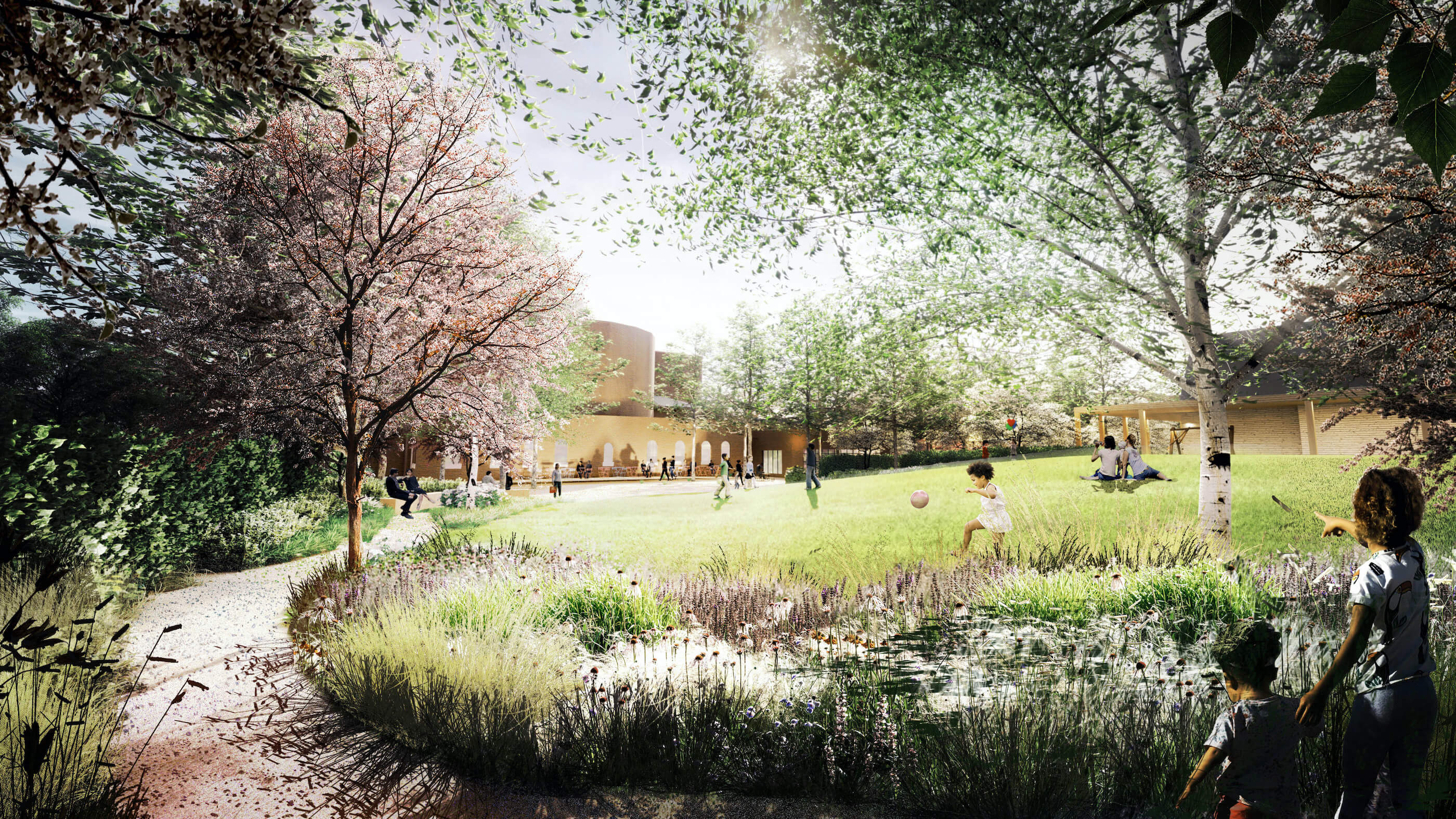
Like with Legacy Park, which is slated to debut in late 2022, the skate park will be gifted to the City of Detroit upon its completion and be formally designated a city park.
Other major elements of the reimagined landscape flanking The Shepherd will be a Great Lawn for social goings-on large and small, formal and informal, and the Nave, a pedestrian walkway designed by OSD that bisects the site while providing a direct link between The Shepherd and the surrounding neighborhood. Carved out of a formerly desolate alleyway, the Nave will also link to a cafe within an old parking structure at the site.
Sculpture gardens, churches-turned-community art spaces, and Tony Hawk-designed skate parks aren’t all that’s in store for this very busy East Village block. Adjacent to the church proper, there’s also the old rectory, which will be converted into a six-room bed and breakfast overlooking Legacy Park. The 5,500-square-foot building will also serve as headquarters for Modern Ancient Brown, a foundation established by Binion in 2019 that “endeavors to support the intersection between the visual and literary arts in the Detroit community” through grant programs, artistic residencies, and more.
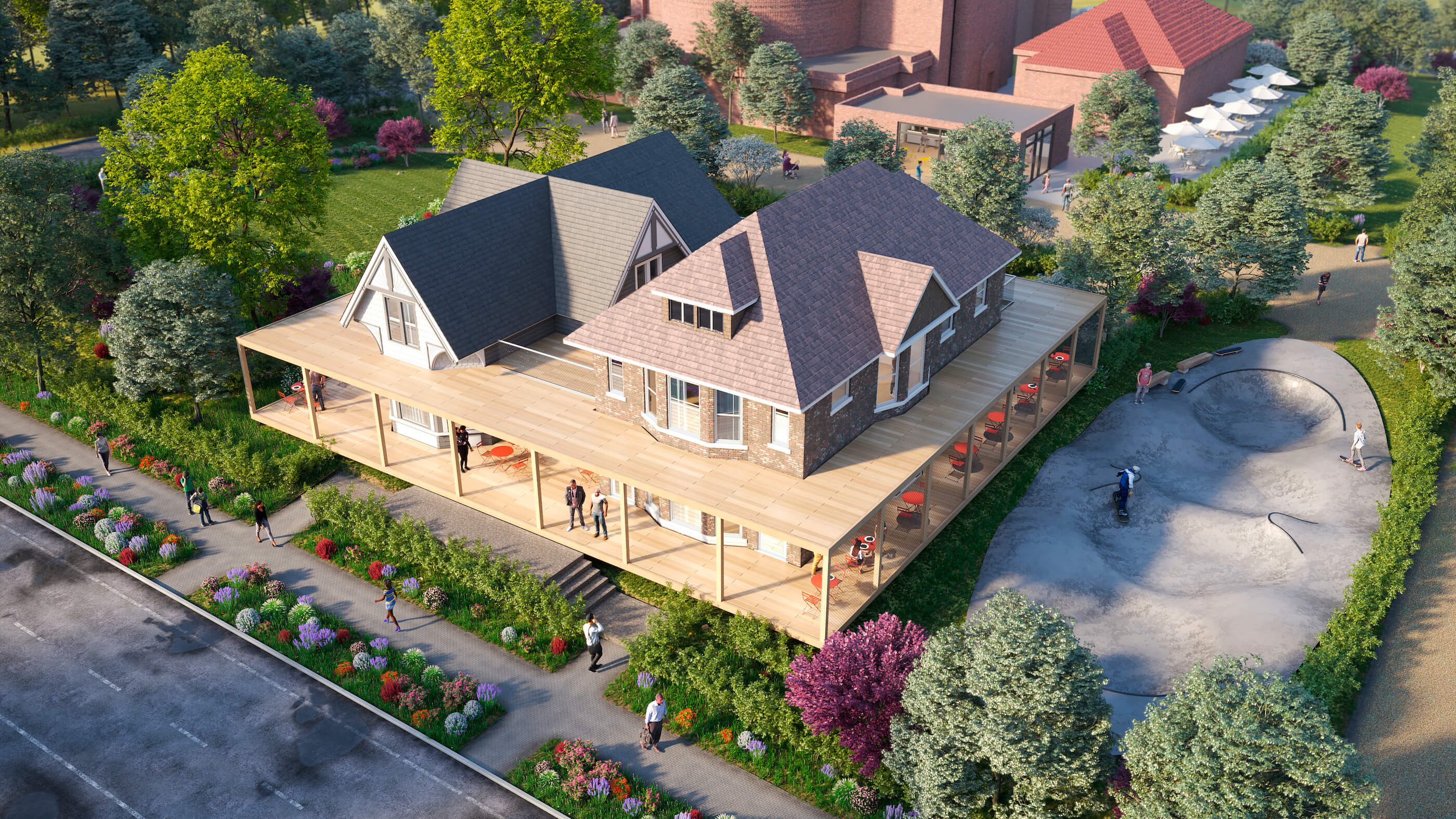
What’s more, two long-vacant homes located directly behind the church (and adjacent to the future skate park) along McClellan Avenue will be converted into BridgeHouse, a commercial art space that will be fused together by a two-story wraparound deck. The outdoor space encasing the conjoined homes will both provide views of the skate park and Shepherd grounds while also functioning as an outdoor stage for performances, talks, and other outdoor events. UNDECORATED, a Detroit-based design studio founded by Ishtiaq Jabir Rafiuddin, is heading the design of that restoration and adaptive reuse project.
“What’s most interesting for us, especially as New York City architects working in a new city, is just the opportunity for placemaking” said Petersen of PRO’s involvement with both the interior conversion of the church and early master planning exercises for the site. “I think that how impactful an architectural intervention can be within that context, because it’s really the seed of something that will grow around it as opposed to an insertion into a dense urban environment like most of the projects that we do here in New York.”








